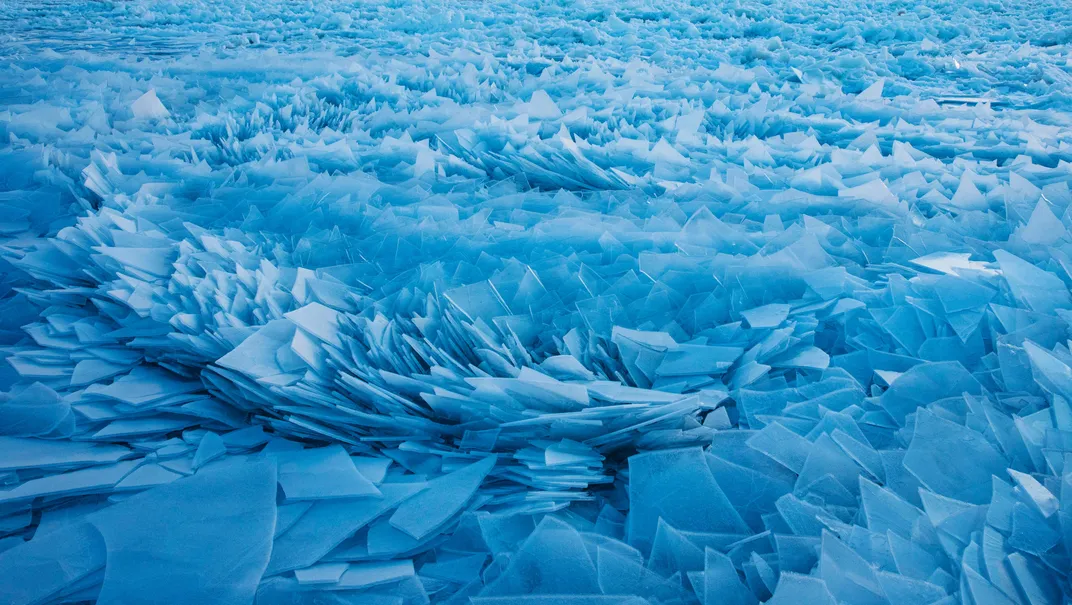Photographer Captures Stunning Images of Ice Shards Along Lake Michigan
As the lakes melts, glassy sheets of ice are piling up along another along parts of the Michigan shoreline
/https://tf-cmsv2-smithsonianmag-media.s3.amazonaws.com/filer/52/a1/52a1be8d-7860-4d65-bfad-bbf9a10c8553/ap_19081830855486.jpg)
One of the best things on the internet in the last week has been the stunning images of ice breaking up on Lake Michigan.
Tens of thousands of smooth, sharp ice shards have piled up on one along South Haven pier in the southwestern corner of the state, creating vast areas that look like millions of sheets of glass have been thrown into the lake.
As captured by the lens of Joel Bissell of MLive.com, the ice looks otherworldly, more landscape art by Andy Goldsworthy than any natural phenomenon.
While more than half of Lake Michigan’s 22,404 square miles of water (just around 2,000 square miles shy of the state of West Virginia) was still covered in ice in early March, warmer temperatures recently caused big breakups of the ice that led to the mesmerizing scenes.

So what can cause a lakefront to look like a giant arctic porcupine? As Trevor Nace at Forbes reports, when the ice begins to melt and break up, the water below pushes sheets of the glassy ice toward shore, causing it to stack up on top of one another, creating the arctic landscape. But the Coast Guard warns anyone tempted to step out on the ethereal icescape to think twice. “No ice is safe ice especially this time of year,” U.S. Coast Guard BMC Grant Heffner tells Bissell of MLive.com. “The ice is certainly deteriorating and breaking up.”
In the Great Lakes, where Arctic temperatures and high winds meet fresh water, the stunning ice shards are just one of the neat tricks that take place. In 2018, the Straits of Mackinac, the waterway between Lake Michigan from Lake Huron, coughed up giant chunks of popsicle-blue ice. Blue ice like that occurs when ice is compressed so much that air bubbles are pushed out. Without interference from the bubbles, light travels deeper into the ice, filtering out longer wavelengths of light on the red end of spectrum and leaving only shades of blue to produce the phenomenon. There's also needle ice, which occasionally forms on parts of the Great Lakes and looks like blooming ice flowers. Ice balls, which form in lakes and seas when super cold temperatures and wind, alternatively, can combine to sculpt round ice boulders. When they make it to shore, they look like an invasion of marine bowling balls. (In 2016, the phenomenon covered 11 miles of beach in Siberia's Gulf of Ob.) Last month, the Great Lakes even saw an "ice tsunami" or ice shove when winds pushed a 30-foot wall of ice onto shore along parts of Lake Erie, which led to a voluntary evacuation order.